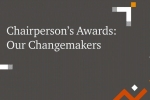The Solution
To address this problem, a team in PwC India has helped a client to develop an AI-powered solution, deployable on mobile applications, that can detect the presence of a cataract by analyzing the picture of the eye captured on smartphone. The app will then alert the user if a cataract has been found. Any volunteer with a smartphone can use this application to go door-to-door screening the elderly, in their homes. Anyone who is found to have advanced cataracts can then be referred to health officials who can arrange further treatment.
The following are the factors that define the impact of this solution.















